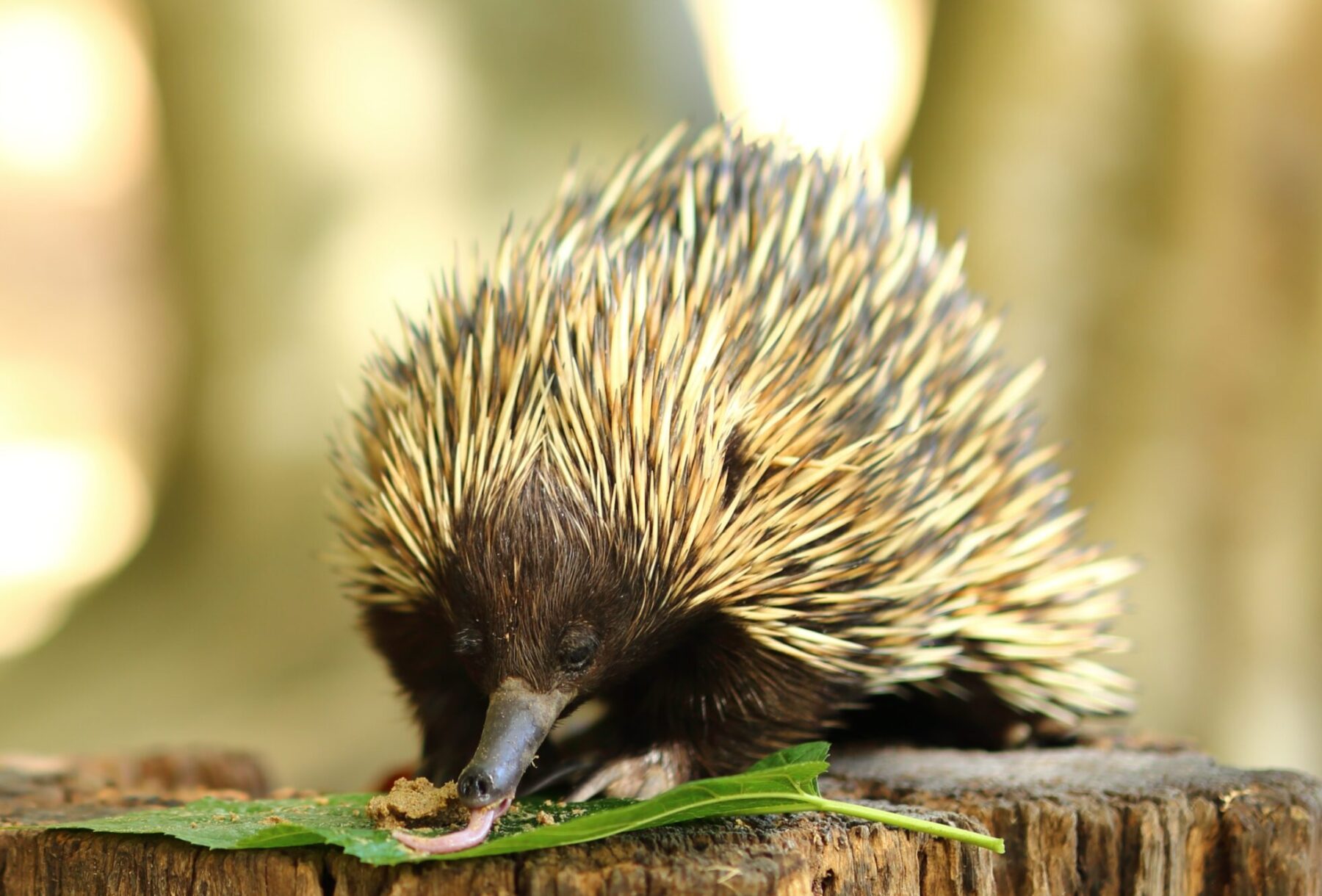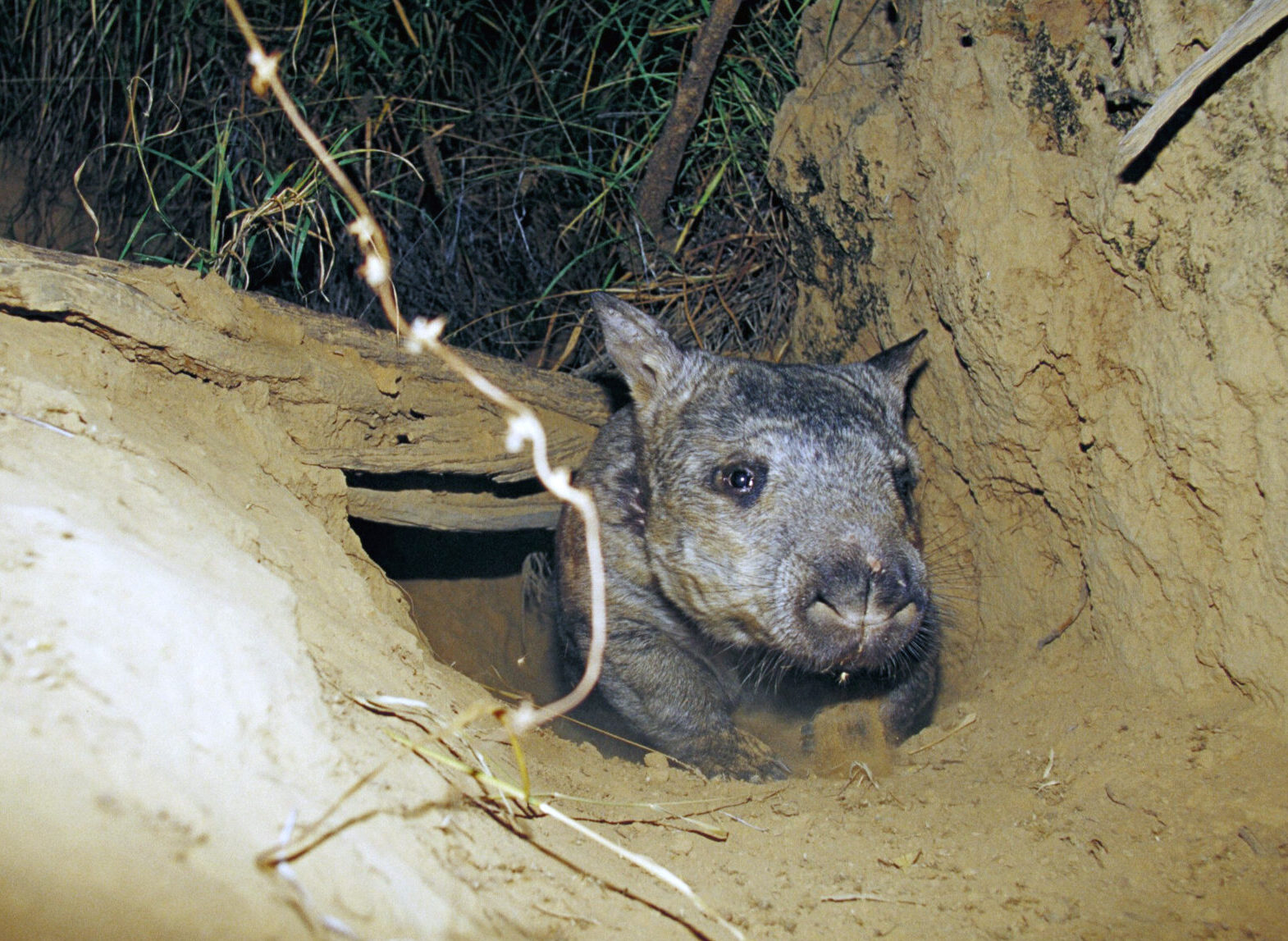| Common name | Short-beaked echidna |
| Scientific name | Tachyglossus aculeatus |
| Type | Mammal |
| Diet | Carnivorous, eating ants and termites |
| Average lifespan | Between 15 and 50 years, but averaging 10 years in the wild. |
| Size | Up to 40cm in length and up to 6kg in weight. |
With its snuffling and shuffling, unique snout and spines, and a rare ability to lay eggs, the short-beaked echidna is Australia’s most widespread native mammal and one of the country’s most well-loved. Along with the platypus, echidnas are monotremes, or egg laying mammals, and the short-beaked echidna is the only echidna species that calls Australia home.


Easily identifiable thanks to its spines, these modified hairs cover the entire body as well as the short tail of the short-beaked echidna and range in colour from cream to black.
With a thick reddish to dark brown fur underneath, the short-beaked echidna has a varying number of spines depending on the climate in which it lives, with those calling cooler areas home having denser hair than those living in warmer habitats.

The short-beaked echidna has a rigid and hard tubular snout with its toothless mouth positioned right at the end. It’s sticky, saliva covered tongue can measure up to 17cm long and pokes in and out of the echidna’s mouth, slurping up ants and other insects.
Short-beaked echidnas have short, stubby legs and the front feet have five flattened claws that are often used to break open logs and termite mounds and to dig burrows. The hind feet face backwards, a clever adaption which helps this resourceful mammal push the soil away when burrowing.


Although shy and preferring to go about their business without much fuss, the short-beaked echidna is found across most parts of Australia and Tasmania, from deserts to rainforests, grasslands, and woodlands to alpine habitats. The only other species of echidna, the long-beaked echidna (Zaglossus bruijni) is endemic to New Guinea. The wide-ranging survival of the short-beaked echidna is linked to its ability to thrive in extreme temperatures by burrowing into the soil, sheltering in logs, hiding under vegetation, and finding shelter under rocks and abandoned rabbit and wombat burrows.

The short-beaked echidna enjoys a diet of ants and termites, using its sharp claws and strong snout to crack into mounds, nests, and tree logs, where it then slurps up its prey with its long, sticky tongue. Taking advantage of the cooler parts of the day, the short-beaked echidna feeds in the early morning and late evening, relying on its attuned sense of smell to locate its next meal.


As a monotreme, the short-beaked echidna lays one soft-shelled egg at a time in her backwards facing pouch which hatches after ten days. The juvenile echidna or ‘puggle’ is born hairless and blind and is the size of a jellybean. The puggle is carried in the mother’s pouch for three months, suckling from specialised pores because short-beaked echidnas don’t have nipples. The puggle will eventually leave the pouch when its tiny spines begin to sprout and will wean completely at around 12 months of age.

Slow moving, the short-beaked echidna is prone to being hit by cars, and is also under threat from habitat loss, but in the wild, these unusual creatures don’t have any true natural predators. If under threat, this echidna will roll into a spikey ball and lodge itself in a rock crevice or hole in a log or dig a shallow hole and lay with its sharp spines exposed – a tired and tested method of keeping itself safe.











